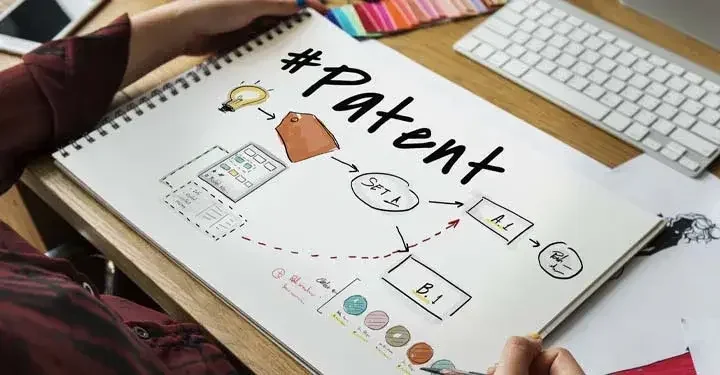While you may have worked on developing many ideas throughout your life, this one is it. You just know this invention is going to be a commercial success. Before you go any further, though, now is the time to protect your intellectual property—which is a legal term that encompasses inventions—and the way to do this is with a patent.

You've probably heard about the race to the patent office, and the reason for that race is the fact that the patent for an invention goes to the person who gets a patent application filed first—not necessarily the person who actually came up with the invention first.
A patent gives its owner the exclusive legal rights to an invention for a specific period of time. To receive the full protection of a patent, the inventor must file a utility patent application. Sometimes, however, the required information isn't yet available, or perhaps the inventor doesn't have the cash on hand to follow through with developing their idea. In either of these situations, getting a provisional patent may be advisable.
The differences between a utility patent—also called a nonprovisional patent—and a provisional patent begin during the application process and carry through to the types of protection provided by each. Read on to learn more about these two types of patents, both of which protect your intellectual property, yet in different ways.
The utility patent
A utility patent is the type of protection most people think of when they hear the word "patent." That is, when you file a utility patent application, the United States Patent and Trademark Office (USPTO) reviews the information you've provided to determine whether to grant the patent.
Once granted, a utility patent gives the inventor the exclusive rights to exclude others from making, using, selling, and importing an invention for a specific time period, usually 20 years. Once a patent expires, others are free to use the invention.
How to get a utility patent
The process for obtaining a utility patent entails filing a utility patent application, which follows a specific format. The application may be filed online through the USPTO.
Patent attorneys, who are licensed by the USPTO, often draft utility patent applications because nailing down the details required can be challenging. A successful utility patent application must both communicate the invention's technical details and succinctly lay out the boundaries of your patented invention.
The description for a utility patent must be detailed as to what the invention does and how; for example, explaining the benefits it provides or how it solves a problem. Drawings usually accompany the text to fully illustrate these concepts. Inventors also must make one "claim," which defines the scope of the patent protection. The claims are among the trickiest parts of a patent application for a layperson to develop, which is why many inventors engage patent attorneys to help them.
The utility patent application must be filed with the USPTO, which will either accept or reject it. If rejected, the inventor has the opportunity to fix the problematic parts of the application and try again.
Once an application is filed, the USPTO examiner searches for prior art that already reads on the invention, and the inventor may revise the claims several times over the course of years. Once a "notice of allowance" is given, the patent will be granted after the payment of a fee.
The provisional patent
Unlike a utility patent, a provisional patent does not get reviewed by the USPTO, although it is also submitted there. The USPTO explains the provisional patent application process on its website.
This type of patent essentially holds a place for the invention until the inventor is ready to apply for a utility patent. The subsequent utility patent application must be filed within a year. Within that time, the inventor can work on conducting more research into the invention or potential market and/or refining their product or process. Whether it's the right time to file for a provisional patent depends on your specific situation, including your invention's readiness for market and your own cash flow.
How to get a provisional patent
The requirements for submitting a provisional patent application aren't as strict as those for a utility patent, but how you write a provisional patent application is important. Inventors must be sure to include enough details to show the invention and allow for others to make and use it.
Most notably, the provisional patent only works to hold the place for an invention as it was described in the original provisional patent application. If there are new details or processes, they will not receive the benefit of the earlier filing date of the provisional patent. In such a situation, certain aspects of an invention may have different dates of protection, which is why it is important to pay careful attention to the way the provisional patent application is drafted.
Benefits of a provisional patent
An inventor may seek a provisional patent to establish an early filing date in the race to the patent office. Applying for a provisional patent generally costs less than applying for a utility patent. You may choose to use the money you save for further technological developments. Moreover, you can show a provisional patent to potential investors and perhaps generate more funds to develop your idea.
Another potential plus of a provisional patent occurs when inventions are more valuable earlier in the life of the patent. This is often the case with medical devices.
Converting a provisional patent into a utility patent
If you have a provisional patent, it doesn't automatically turn into a utility patent at some point. Instead, you must file a utility patent application within a year of the filing date of the provisional patent application in order to receive the full protection that a utility patent provides. To convert a provisional patent into a utility patent, you must reference the provisional patent, which has been holding a place for your eventual utility patent application.
Patents can be complicated, so to be sure you're protecting yourself and your inventions as much as possible, you may want to seek legal advice from a professional, starting with filing your provisional patent application. The most important thing, though, is to get moving now—the race to the patent office waits for no one!

